Best Video Game Mods of All Time
Some mods can change the world.
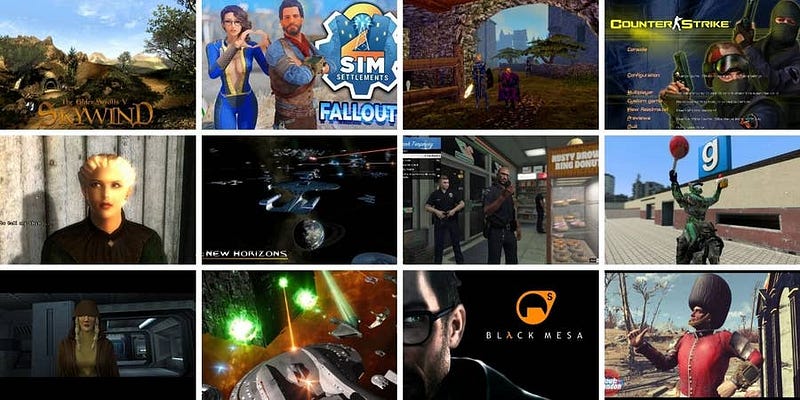
Video game “modding” (the process of modifying a game’s content after its release) has a long history, with early games like DOOM featuring all manner of mods created by a dedicated community.
Modding shows the power of community when it comes to transforming video games from simple packages of content into living, breathing, examples of community art.
Not all games are moddable, of course, but even for some that are deliberately hard to mod, modders have found ways to interact with the code and bring out nifty tidbits that might otherwise not have existed.
For some games, intelligent modders have built entire software suites designed to crack into parts of the code and allow huge changes to take place. More and more modern game developers are realizing, however, that mods might just be the way of the future, and companies like Bethesda are actively considering the modding community when they release new games.
Some mods were so large that they, themselves, spawned entirely new game franchises!
Other modders have remastered old games that might no longer be as popular and transformed them for a modern audience, bringing classic storytelling and art to a new generation. Still others are creations for games that the community wishes existed, but don’t, and utilize the platform of one game to build something new — often times for a much loved franchise that doesn’t have its own game yet.
A few mods, too, go beyond the genre, and go beyond even art for art’s sake. These mods have impacts far beyond the gaming community, with ripples that expand outwards into the broader world, changing things in incredible little ways.
This list explores some of all of these types of mods, from the best-known classics, to a few gems that not everyone will have encountered before. There’s even a mod that Sir Terry Pratchett himself worked on, which has to be one of the most heartwarming modding stories that you’ll ever encounter.
Black Mesa (Half-Life)

Half-Life life quickly became one of the best-known games of all time, and its publishing sparked the rise of Valve, the company that created and runs the Steam game distribution service.
Half-Life was a unique blend of shooting game and intricate story, developed at a time when the FPS industry still larger catered to the pure camp, or horror-themes, of earlier titles.
Gordon Freeman, the scientist-action-hero, must escape the Black Mesa Research Facility after it is invaded by aliens, and the (at the time unique) storytelling experience allowed players to watch the story itself unfold through Gordon’s eyes.
Black Mesa

Black Mesa emerged in 2005 as a free-to-play mod, built by fans as a way to show their love and appreciation for the game, and in order to bring it up to the so-called “next-gen” standards. But Valve supported a full version of the game, and over the next fifteen years development slowly ached on until, in 2020, the erstwhile mod finally got its full release as a tried and true remake of the classic title.
Skywind (The Elder Scrolls V: Skyrim)

Few games in modern history have been as popular as Skyrim, the fifth title in the sprawling and epic Elder Scrolls universe.
When Skyrim released, it offered a sprawling open world in which to wander, dragons to fight, deep caverns to explore, and an epic, seemingly dynamic plot that unfolded in different directions depending on how the player handled their interactions.
Plus, who can forget the hilarious “Arrow to the knee” line? Skyrim is also one of the most-modded video games in existence, thanks to the relative ease of modding it vs. other titles.
Skywind

Skywind is an incredible remake of an earlier title in the Elder Scrolls franchise, completely fan-made and utilizing assets from Skyrim. This makes sense because, while Skyrim became a major hit, fans of the series know that there was never a better title than the 2003 game Morrowind. Skywind takes Morrowind and updates it with the Skyrim engine, featuring the hard work and talent of over seventy volunteers!
The mod is not yet available for release, but, according to information from the team, they’re still hard at work developing key sectors of the mod.
The Sith Lords Restored (Star Wars: Knights of the Old Republic II)
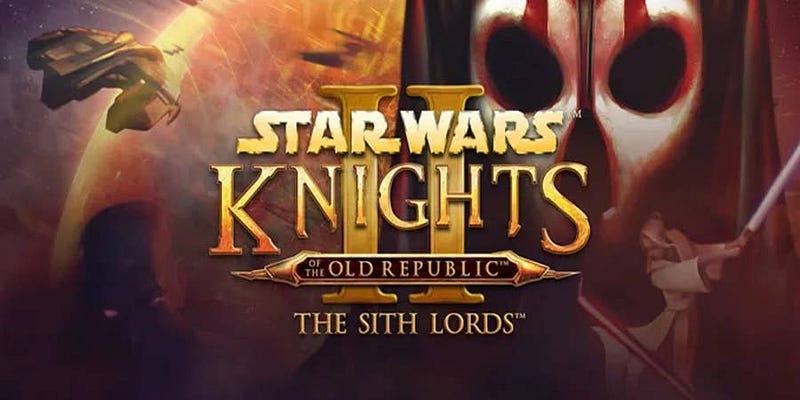
I know of few fan communities as passionate about a video game as those who love “KotOR”.
Star Wars: Knights of the Old Republic, and its sequel game, were some of the most innovative RPGs of their, or any other, time. With deep and intricate storylines, incredible expansive worlds to explore, and unforgettable characters, the games were both superb.
When the second game, The Sith Lords was rushed to release over the objections of the team working on it (this is why marketing should stay the heck out of game development decisions), fans were notably disappointed, however. There were many things to love about the game, but there were also many things broken, and the ultimate storyline failed to live up to its promise… because the most crucial elements had been cut to satisfy the corporate moneygrubbers!
And don’t even talk to me about the terrible MMO. I don’t like MMOs much at the best of times, but The Old Republic MMO left much to be desired.
The Sith Lords Restored

Enter, The Sith Lords Restored. I was part of this modding community myself back in the day, making simple mods that added satisfying extras to previously well-traveled areas of the game. A merchant that sold foodstuffs that offered buffs, some hidden items that could be found via a mini quest.
The whole modding community was vibrant in those days, despite no support at all from the game company. But the team behind The Sith Lords Restored wanted to do something special: they wanted to bring TSL back to life, as it had originally been intended. They pioneered the modding slogan “It’ll be done when it’s done,” for theirs was not an easy task, but they eventually succeeded in bringing all that lost content back into the game. Now, one could hardly think about playing TSL without it.
The only thing I wish is that the KotOR modding community had been more open and willing to share with one another. Modders in that community tended to hoard their mods, fiercely attacking attempts to re-upload their content or use their content in larger, easier-to-install mod packs. On one hand, they wanted to make sure their work was respected. On another, a huge amount of great content was lost when various modding sites went down.
One hopes that, with the new remake of The Knights of the Old Republic now officially on the way, the developers open it to more official modding support, so the community can more easily engage and remain vibrant for years to come.
Garry’s Mod (Valve’s Source Engine)

There is no doubt that Steam-owner Valve is one of the biggest names in the history of game development, with titles like Half-Life becoming ensconced in the video game hall of fame.
But what makes a game so vital is its interactivity, and that is accomplished through the game’s “engine,” the fundamental code on which everything in the game is based. Major companies like Valve often have their own special game engine, while others use engines that have been developed by 3rd parties specifically as blank slates for different types of games.
Valve’s Source engine

Garry’s Mod came into being when Garry Newman, a modder and coder, took Valve’s Source engine and modded it, creating a sandbox game space that could be interacted with in various ways and used as a template of sorts for development by others. It became so incredibly popular that Valve eventually signed a deal with Gary to turn the mod into an official paid release.
Counter-Strike (Half-Life)

We know that Half-Life changed FPS games forever, but it also changed the world of modding forever, presenting modders with a powerful sandbox they could manipulate and expand upon.
Some mods aimed to remaster or restore the game, like Black Mesa, but others simply aimed to add new content. Valve, the company that created Half-Life looked to these early mods as more than fan content, however.
Counter-Strike

Counter-Strike began as just another modification to Half-Life, but it became something so much more. Valve acquired the rights to the mod and went on to spawn a massive franchise of Counter-Strike games that continue to rake in the dough to this very day.
The simple design, a multiplayer game with two opposing sides — the Terrorists and the Counterterrorists — sees players fighting one another to complete various objectives, a staple of the multiplayer FPS genre ever since.
Fallout: London (Fallout 4)

Fallout 4 is the third game to be released by Bethesda Game Studios after they acquired the rights to the original IP.
The Fallout universe is a sprawling post-apocalyptic setting in an alternate future constructed as if the 1950s American vision of an atomic future had been realized. Fallout 3 had been a massive hit upon release, and I remember how incredible that game felt to play — the storyline, for one thing, really worked.
But Fallout 3 and Fallout: New Vegas were both based on an older and more limited game engine. Fallout 4 used the same engine as Skyrim, and the possibilities that this opened were enormous.
Fallout: London
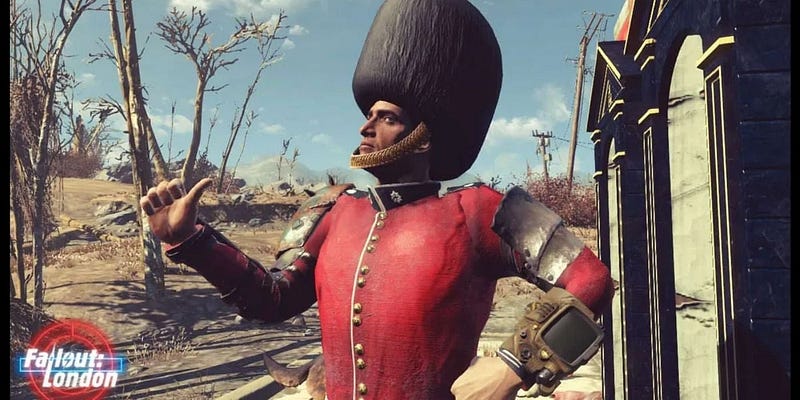
Fallout: London (Fallout 4)
Fallout: London takes the Fallout story to a totally new place: London. After Fallout 3 was released, very little happened by way of evolving the content of the series. Bethesda basically rehashed the same material for Fallout: NV and Fallout 4, turning out games with some good points but also nothing especially groundbreaking. This is a darn shame, considering how fundamentally brilliant the satirical and harsh landscapes of the original two games were.
But that’s where modders come in! Fallout: London looks like exactly the sort of thing that the series needs to revitalize itself, taking the game into a different landscape, a different culture, than what has previously been explored. Of course, there is no release date on this, since it’s a fan-made project created for free. It’s safe to assume that the minimum full release is at least two-five years out, just looking at other large expansions released in the past.
DotA — Defense of the Ancients (Warcraft III: Reign of Chaos)
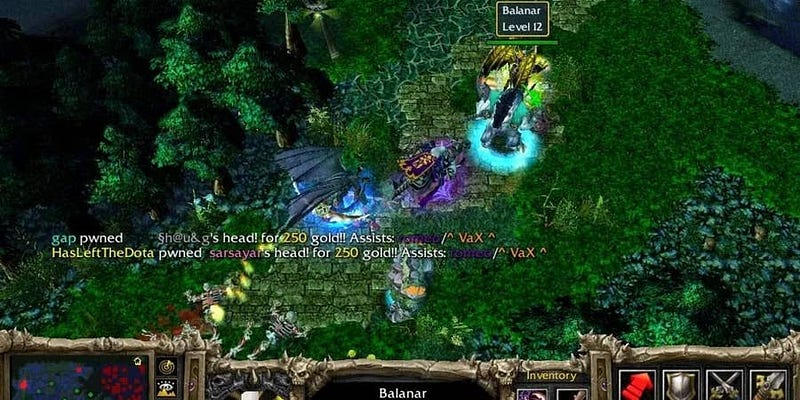
Warcraft III: Reign of Chaos was a major hit at the time of its release, brining the fantastic Warcraft setting to three virtual dimensions for the first time. The game followed the Real-Time Strategy theme of earlier Blizzard-developed games, but with special additions like hero-characters that could level up and an advanced map-level editor that helped players create their own content.
DotA — Defense of the Ancients

DotA started out as an idea based on the earlier Blizzard game, Starcraft, and expanded with the advanced editing features offered in Warcraft III.
Originally, a simple concept based around hero characters, the game mod advanced over the years and under the curation of a number of different mod authors. So popular did the mod become that the somewhat-infamous Valve corporation acquired the rights to it in order to capitalize on the mod’s success.
Star Trek: Armada III (Sins of a Solar Empire: Rebellion)

Sins Of A Solar Empire was something magic back in 2008 — a game that combined unique aspects of a Real-Time Strategy game with the fun of “4X” games (the four “x’s” stand for Explore, Exploit, Exterminate, Expand).
It offered some jaw-dropping graphics for the time, and tactical gameplay that upped the ante of expectations for the genre. It also happened to be highly moddable, allowing players to customize their experience to their liking.
Star Trek: Armada III
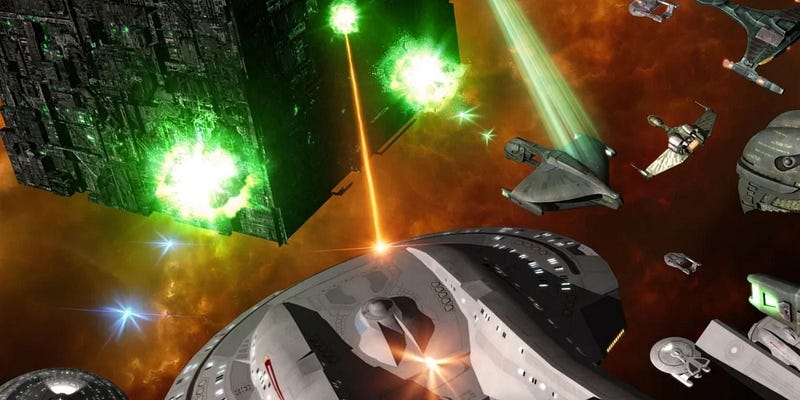
Star Trek: Armada III grew out of a passionate adoration of the original Star Trek: Armada games, widely considered some of the best Star Trek video games around. While the games concentrated solely on the space warfare side of the franchise, it captured this aspect of the show extremely well, and allowed players to feel immersed in the Star Trek universe. But the hoped-for third game never materialized, leaving players in the lurch.
Then came the moddable Sins, and the opportunity of bringing Armada III to life became possible. Designed to be the “spiritual successor to the popular Star Trek: Armada video game series,” the mod starts players during the first stirrings of the Dominion War and allows them to take command of six unique factions, all vying for control of the known Galaxy.
LSPD First Response (Grand Theft Auto V)

Grand Theft Auto is probably one of the most popular games of all time; a sprawling, essentially sandbox city, where violence reigns supreme. Personally, I’ve always hated the game. But for those who do play it, what happens when you’ve shot up your umpteenth storefront, or run over your 500th pedestrian? Sure, the cops come and chase you down… but what would happen if you were the one doing the chasing?
LSPD First Response

LSPD First Response takes everything you know about GTA and turns it on its head by making you a representative of the city’s, err, finest.
With this mod, instead of wreaking havoc and destruction, you embody the principles of law and order (or the principles of corruption and police brutality — the mod is still set within GTA, after all, and your new police powers allow you to get away with some pretty messed up things).
The idea of trying to turn GTA on its head isn’t a new one, but finding a way to do that in a game designed to be a sandbox is hard. LSPD First Response gets darn close.
Darkness over Daggerford (Neverwinter Nights)

Neverwinter Nights blew me away when I first played it; playing this game felt like being immersed in an actual Dunegons&Dragons adventure, and it sucked me in for hours. Based on 3rd edition D&D rules, the game featured powerful multiplayer connectivity, allowing potentially vast numbers of players to interact in the game environment.
Darkness over Daggerford
Darkness over Daggerford focused on the single player aspect of Neverwinter, offering players a whole new town to explore, with a dedicated single player mission involving the mystery behind the death of the town’s leader. Originally, this was intended to be a paid release through a program offered by the distributing company. But, when that model folded, the designer decided to release it for free anyway, and it quickly became a fan-favorite expansion.
Rhye’s And Fall (Civilization 4)

The Civilization games are some of the best-known video games in history, providing players with the chance to forge their unique destiny upon the pages of history in classic turn-based strategy format.
The games in the series typically goes through massive internal revision and updating over the course of many years, with new features added through expansions — and these acting as tests for core features in the next iteration. In this way, each new title feels at once deeply connected to its roots and yet new, with fresh content bolstering its lifespan.
Rhye’s And Fall

Another way that the Civilizaton game offers players massive replay value is through the incredible modding community. Civilization 4 was much loved by the gaming community, and a number of great mods were spawned for it, with one of the best being Rhye’s And Fall.
In this mod, the rough outlines of history were simulated by advanced scripting. Instead of all the empires spawning at once during the beginning of the game, new empires now spawn at different moments in history, taking over nearby cities, and simulating things like the breakup of the Roman Empire or the birth of the United States.
Sim Settlements 2 (Fallout 4)

One of the neatest things about Fallout 4 is how versatile it is compared to previous games in the series.
In fact, the modding community for the prior two titles ended up creating so much amazing content that Bethesda basically built Fallout 4 around the idea that it could and should be modded (sometimes to the game’s detriment, as if the designers assume the modders would take care of anything wrong with the game).
But recently Bethesda has begun hiring modders to do the hard work that they’ve already been doing purely for passion, and this means that a revitalized era of content might just be on the way.
Sim Settlements 2

This incredible expansion builds upon its prior release and opens up the Commonwealth in a whole new way. Building settlements is now viable and fun, there are huge branching quest lines to explore, top-notch voice acting, and deep storylines to get immersed in.
Honestly, Sim Settlements 2 is more like a massive DLC than a mod, and it’s even going to feature new content released in episodic installments to keep the fun, and the new storyline, going.
Basically, this is Fallout 4 the way it was meant to be played.
Bonus Fallout 4 mod
COVID-19 Coronavirus Outbreak did something pretty neat. Its overall point took it beyond the world of modding and into the world of real-world impact (if a small one). This mod added COVID-19 to the Fallout world, making it a transmittable disease in the game. There were other changes as well, most capitalizing on a morbid dark humor, such as antibiotics becoming “toilet paper.”
But the point of this mod wasn’t just to add the sad reality of our pandemic to the game. Designer Radbeetle used the mod as a method to help raise awareness about the realities of COVID-19 and leveraged the Nexus Mods’ donation system to take donations from players which were then transferred to charity. It was a token amount, but the cause was good, and it’s neat seeing a video game mod employed in such a way.
Portal Prelude (Portal)

Say what you want about Valve’s crummy treatment of indie game designers on its Steam platform, the company certainly needs to be credited with its own fair share of incredible design content in the past. Not the least of these games is Portal, a satirical sci-fi puzzle game that became so popular it quickly reached the level of early pop-culture meme.
Portal Prelude

Portal Prelude takes players into the world of Portal before the events of the main two games, in a pre-GLaDOS era of Aperture Science, where the test subjects are monitored by employee researchers.
ST New Horizons (Stellaris)
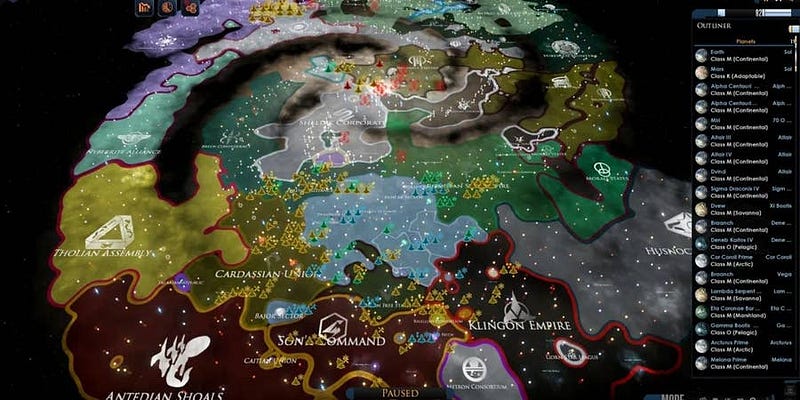
Stellaris is easily the best modern space strategy and empire-building game around at the moment, despite various flawed design choices and limitations of the clunky engine.
The premise is the same as it always is with these games: players take control of a species and build a space empire, following the classic 4X (Expand, Explore, Exploit, and Exterminate) model, but all in real time (though still pausable when necessary).
What makes the game great is the massive amount of potential, the huge range of possibilities, and the simple fact that the complex functionality of the game works: including traditionally difficult-to-implement things like AI diplomacy.
Now, if only they’d bring in a dynasty system for some added roleplaying….
ST New Horizons

ST New Horizons actually does bring in a certain level of roleplay to the game, by bringing a massive amount of Star Trek lore to Stellaris, including advanced functional mission arcs for a number of the classic Star Trek empires that makes it feel like you’re progressing through time. This is, honestly, the best Star Trek game around — which makes sense! Fans will always create the best content.
The Mod that Terry Pratchett loved: Vilja (Oblivion)

There are, as I’ve said before, few games that are as moddable as The Elder Scrolls games, which is one of the series enduring strengths.
The modding community has, over the years, done more work on the games than the original developers ever did, turning out incredible expansions and complete overhauls.
But there are also smaller gems, finely-crafted works of art made by modders who simply love the series and want to experience its native form in the deepest possible way. These don’t always get the recognition that they should.
This sort of game appeals, I think, to artistic types who love the experience of simply being part of a massive open fantasy world, a blank space from which to explore and experience the fantastic and the profound.
After all, as Sir Terry Pratchett, the late and great incomparable genius of fantasy literature, write in his introduction to The Ultimate Encyclopedia of Fantasy, “Imagination, not intelligence, made us human.”
I don’t mention Sir Terry arbitrarily, here. The famed author and knight was an avowed fan of video games, and of Oblivion in particular, and the mod in question today is one that he ended up having a massive impact on in the most delightful and unexpected of ways.
Vilja

Vilja is a mod created by a modder named “Emma” who set out to create a different type of companion for the expansive open-world roleplaying game.
While Oblivion and Skyrim are great games, they often feel annoyingly player-centric, with the rest of the world appearing quite static unless acted upon.
This was always particularly noticable with companion characters, who, after slim dialogue options, would end up just begin digital pack-mules for the player’s stuff, running five paces behind while the player did whatever they wanted to do.
Emma thought that a companion should be something more, and this Vilja was born. With another modder named Charles “CD” Cooley, she launched one of the best mods Oblivion had ever seen.
Vilja could make her own choices — she would sometimes take charge of things for the player, would have conversations with them, and generally felt more like a living and breathing character than any other part of the game.
For one player, in particular, she was an especially loved creation. Terry Pratchett loved the idea of a character that could be this deeply interactive, and he ended up contacting Emma to let her know he appreciated the mod.
Eventually, his friendship with Emma and Charles grew, and he even started writing elements of the quests for Vilja; the three of them even collaborated on a different mod that brought carrot-stealing donkeys into the game. But, eventually, Vilja became important in a different way.
Sir Terry Pratchett suffered from Alzheimer’s, which made it increasingly difficult for him to play the games he loved, since the short-term memory functioning required was leaving him.
That made Vilja all the more important, because she started to take on the role of a real companion for the author. Emma and Charles expanded Vilja’s abilities in the game, giving her the ability to lead the player character out of underground mazes and help keep them on the path to quests — exactly the sort of help that Terry needed.
It’s honestly so amazing to think of how this friendship formed. The impact that this mod had on Terry’s life was profound, and, in turn, his later work (which drew strength and inspiration from this mod) continued to inspire millions of people around the world.
This is a prime example of the best that modding can be: a collaborative, fun, community exercise in bringing new dynamics to light within video games. Not just adding new quests or locations, but adding fundamentally different and more vital ways to think about playing the games themselves. Vilja offers players a unique, dynamic companion, and helps deepen the sense of imaginitive immersion that makes Oblviion so wonderful.
The best part? Vilja is available in Skyrim as well!
